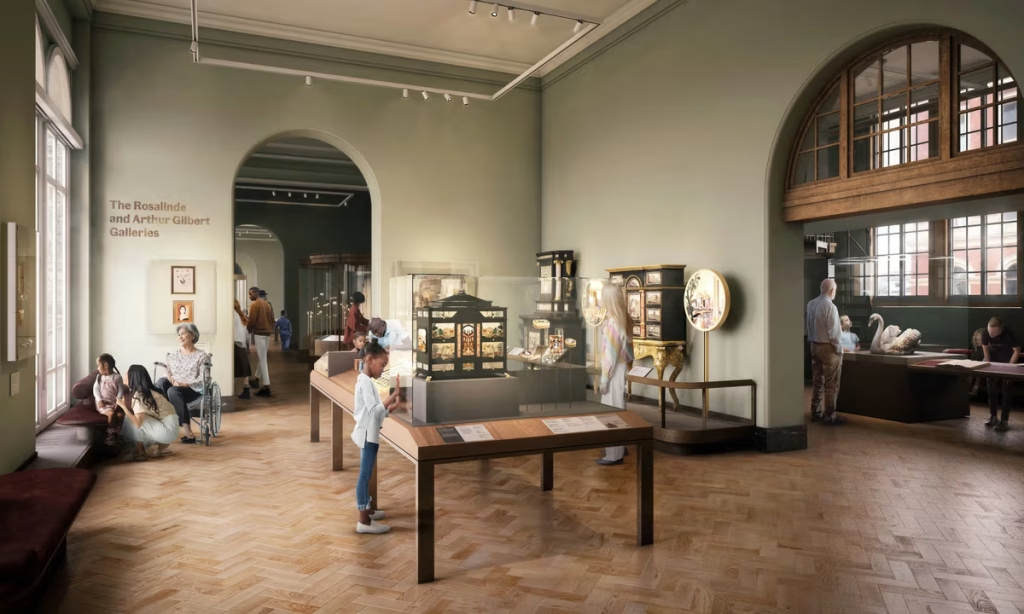Galleries dedicated to the Rosalinde and Arthur Gilbert Collection at the Victoria and Albert Museum (V&A) in London will be revamped in coming months to include a space focused on exploring Nazi and Soviet looting. The newly expanded galleries will also display treasures including 200 gold boxes and micro-mosaics made from minuscule pieces of coloured glass.
Set to be unveiled next March, the new Gilbert Galleries have been designed by the London-based Citizens Design Bureau practice. The number of galleries will increase from four to seven and will occupy adjacent former offices overlooking both the John Madejski Garden and Exhibition Road, as part of the V&A’s Future Plan development programme. Project funders include the Gilbert Trust for the Arts and The National Lottery Heritage Fund.
A room focused on new research into provenance will throw light on two pairs of silver-gilt gates taken from Kyiv’s Pechersk Lavra monastery. The gates, made by Alexis Timothy Ishchenk in around 1784, were commissioned by the Russian empress Catherine the Great in 1784, and were looted in the 1920s after the Russian Revolution, according to The Times.
They were acquired in 1935 by the media tycoon William Randolph Hearst from the Jewish art dealers S and J Goldschmidt. The gates will be discussed at a conference due to take place at the V&A next September, which will address Ukrainian heritage past and present through the lens of material culture.
Gold boxes, including diamond-set snuffboxes commissioned by the 18th-century monarch Frederick II of Prussia, often referred to as Frederick The Great, will be shown in another new room. Meanwhile two large-scale views of the Colosseum and the Roman Forum by the 19th-century Italian artist Domenico Moglia, a micro-mosaic pioneer, will go on show for the first time.
These large-scale pieces are intricately made from tiny pieces of coloured glass, some only a few millimetres square. Arthur Gilbert is believed to have coined the term “micro-mosaic” on seeing a similar work in an auction house that he first thought was a painting.
Arthur Gilbert (1913–2001) and Rosalinde (1913–95) began their careers as fashion entrepreneurs in wartime London before moving to Los Angeles in 1949, where Arthur Gilbert became a successful property developer. Their collection was amassed from the 1960s onwards while they were living in Beverly Hills.
It was donated to the British nation in 1996 and initially shown in Somerset House and then, from 2008, at the V&A. Today the collection comprises around 1200 items.
